
Have you ever heard of the song by Glenn Frey, “The Heat Is On”? No pun intended, but the heat is certainly on!

Have you ever heard of the song by Glenn Frey, “The Heat Is On”? No pun intended, but the heat is certainly on!
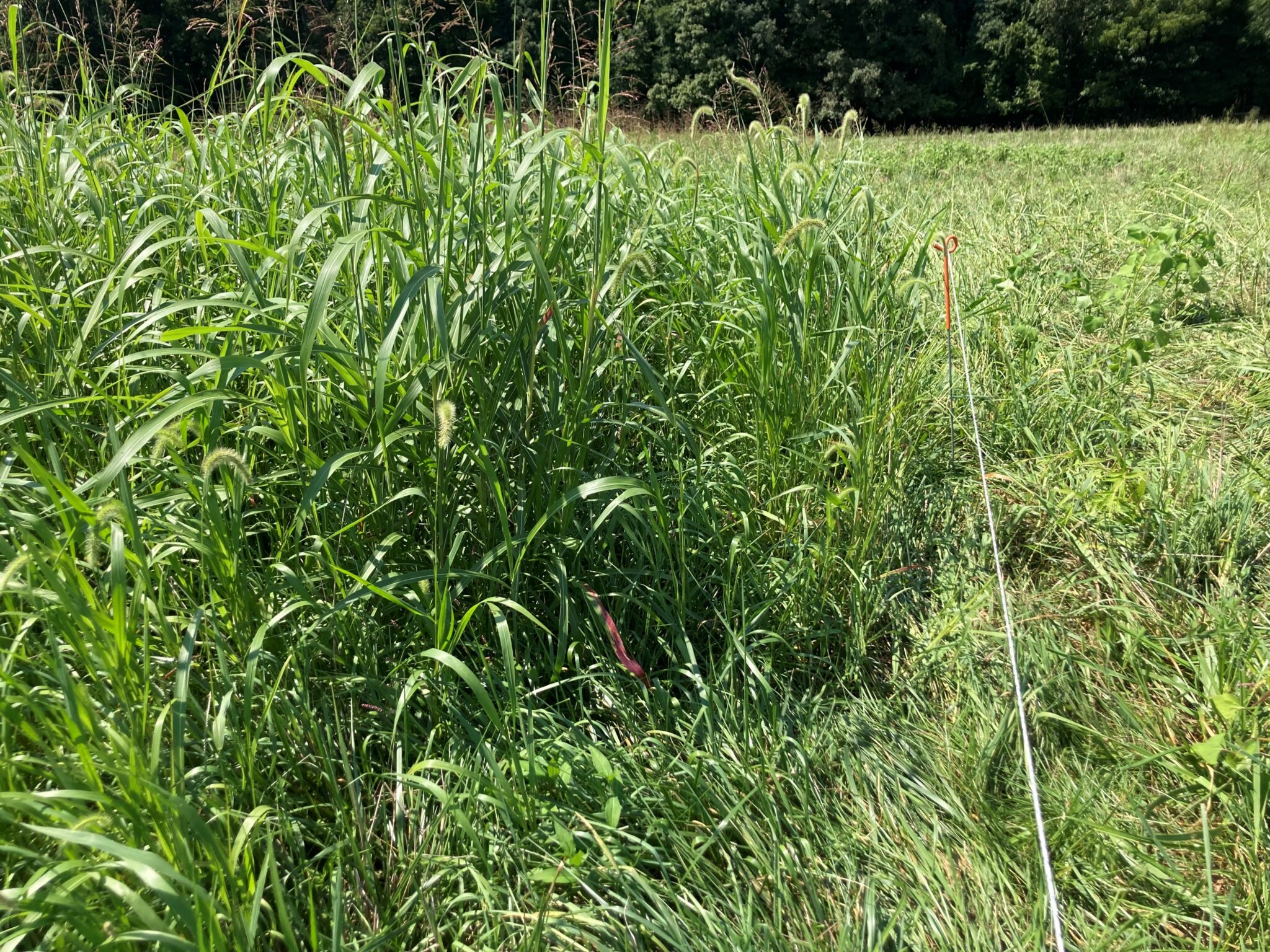
Hard to believe, especially after this week, but fall and cooler temperatures will be here in less than a month.
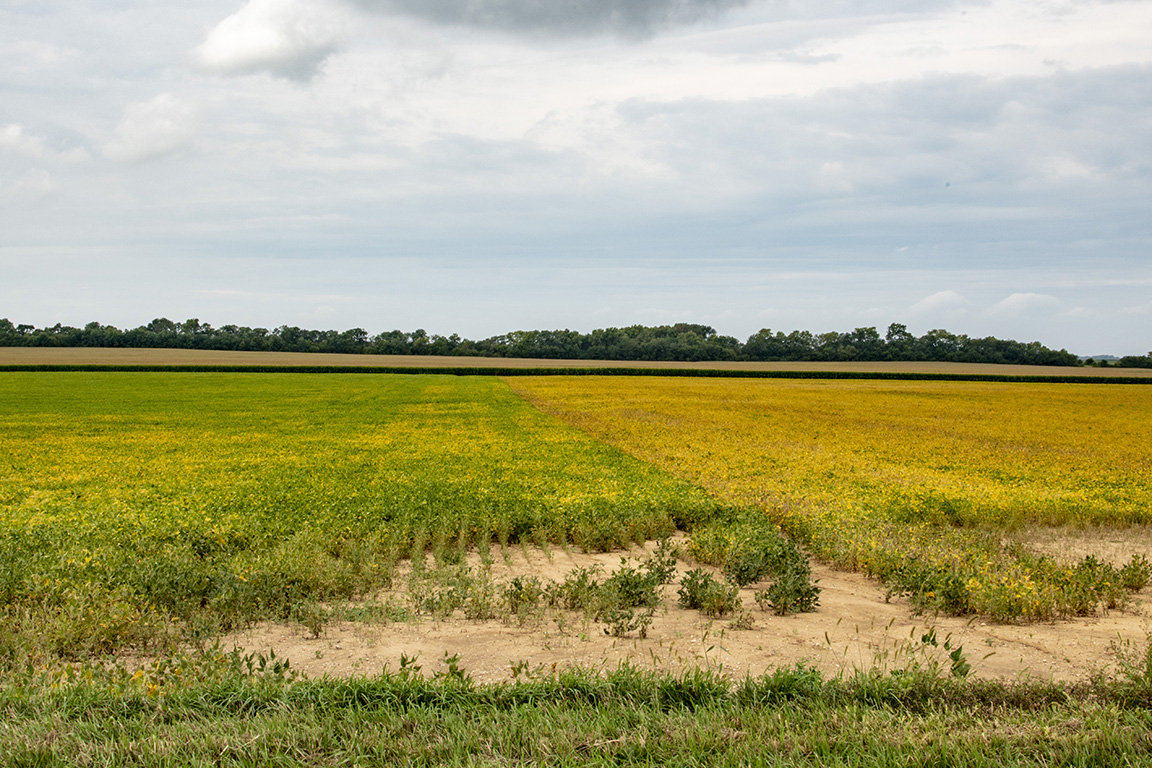
Though Japanese beetle numbers and their defoliation to soybean typically get lots of mid-season attention, their pressures seemed to be lower this year.
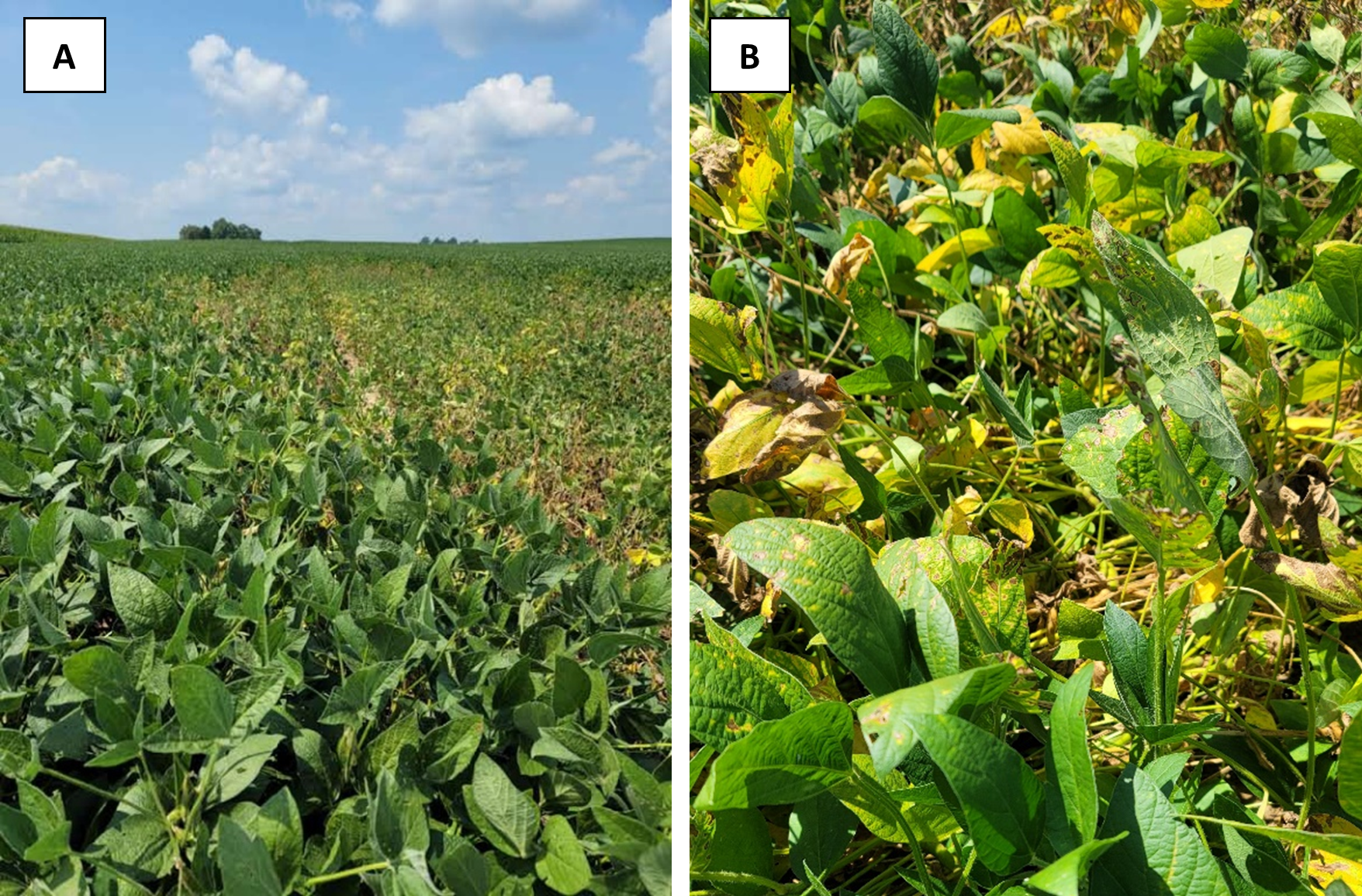
Red crown rot of soybean has become a new concern this season in Indiana after a few localized occurrences have been found this year.
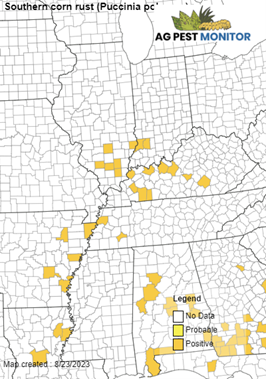
Southern corn rust has been confirmed in two counties (Knox and Daviess) this week both at low levels in Indiana (Figure 1).
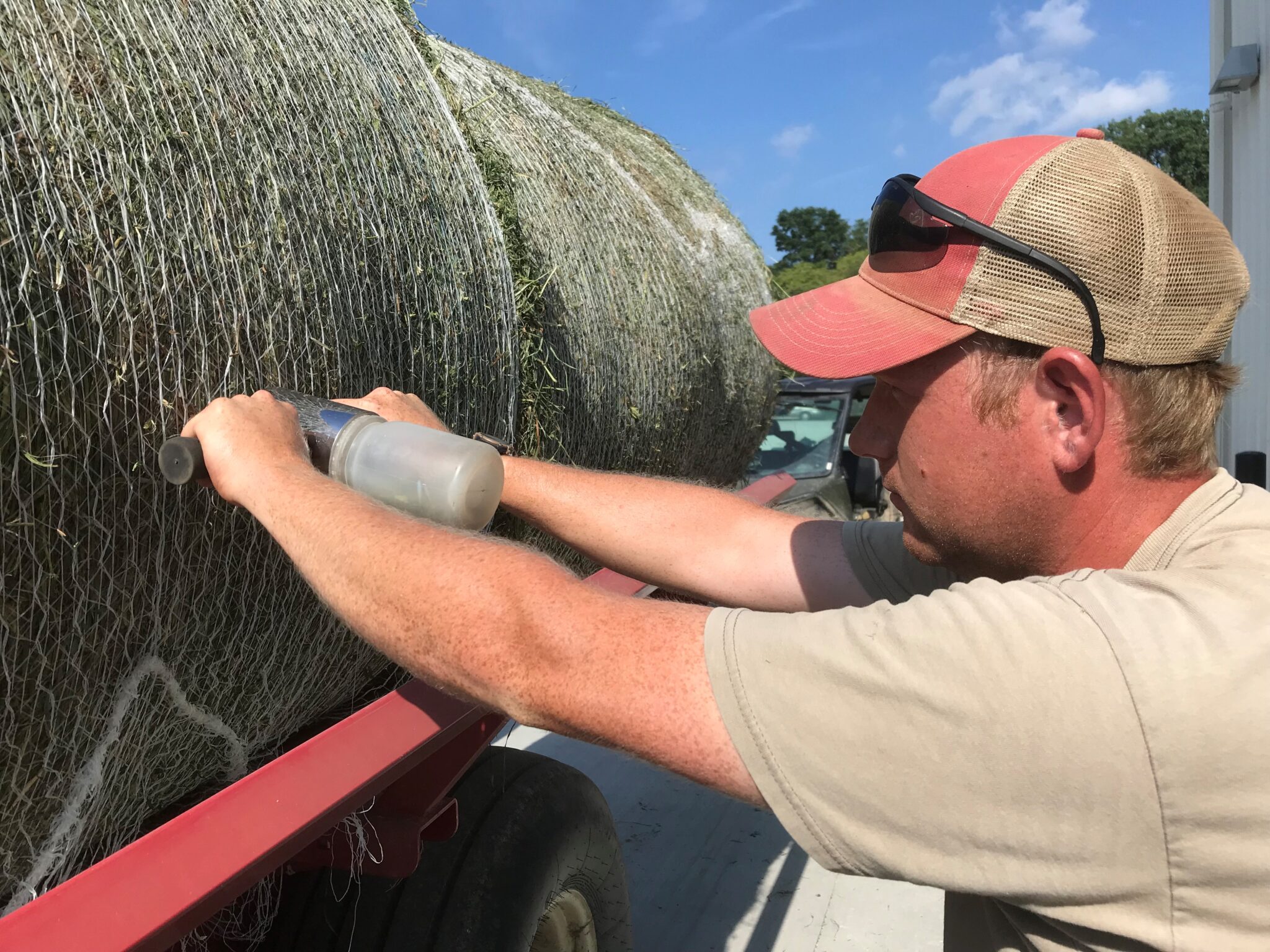
Hay harvest will soon be coming to a close for another year. It is important to now follow through and Sample, Test, Allocate, and Balance or STAB your hay. Doing the STAB is an important best management practice to keep your livestock healthy. Sample – Hay from each harvest from a field should be sampled with a hay probe. Many Purdue Extension offices have a hay probe to loan to sample hay. The website foragetesting.org has a list of hay probes that can be purchased for sampling hay. Twenty probings comprise a sample. Ten large bales are sampled twice on opposite sides of the curvature of a round bale and each butt end of a rectangular bale. One probing is taken from one butt end of each of twenty small rectangular bales to comprise a sample. Probings should be placed in a clean plastic bag that can be[Read More…]

Over the last 30 days (July 18-August 15), the state average temperature was 73.5◦F, which was essentially normal.
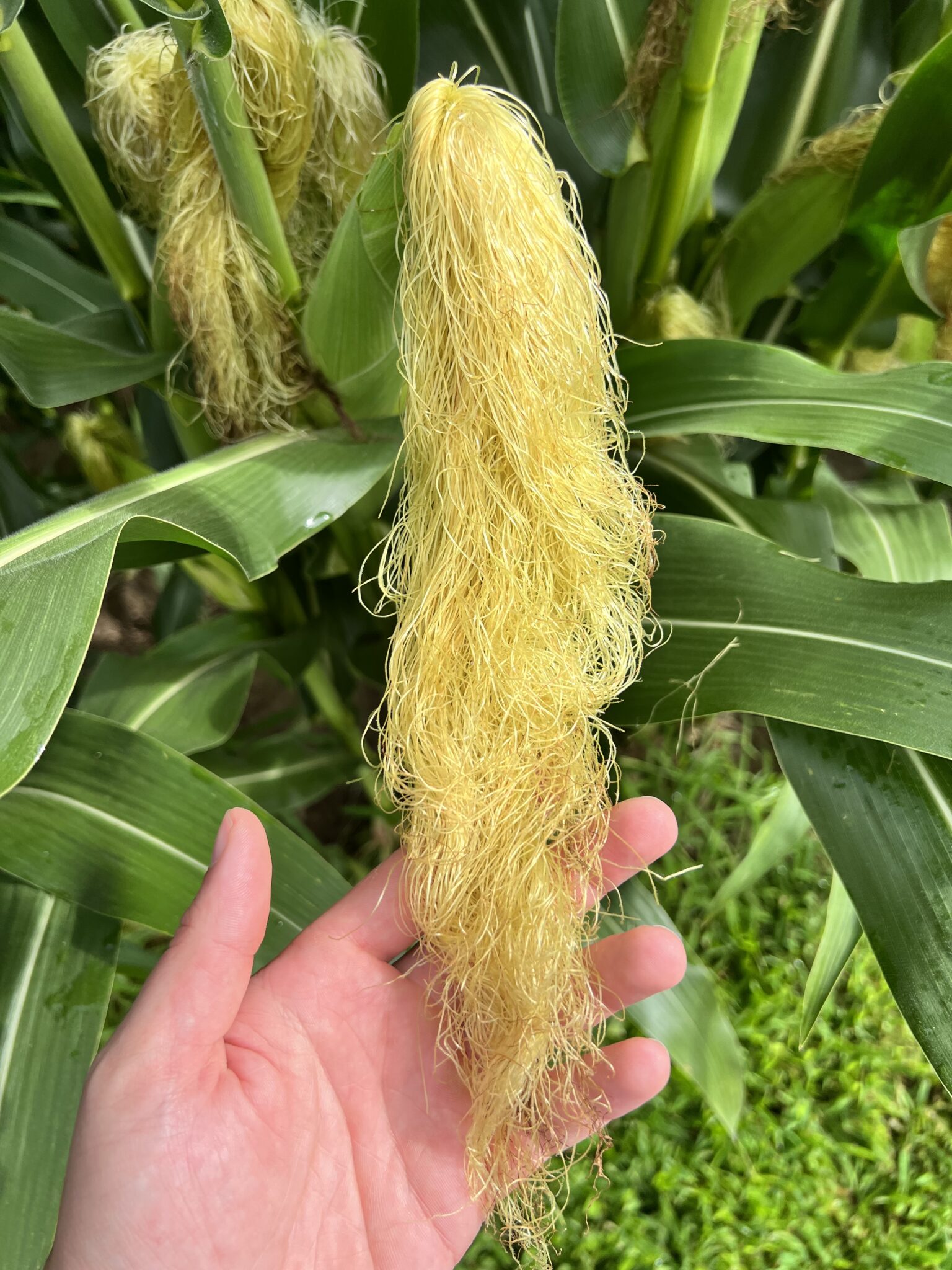
The process of pollination is one of the most critical periods for grain yield determination in corn and successful pollination is largely determined by the successful synchronization between silk elongation, tassel emergence, and pollen shed.
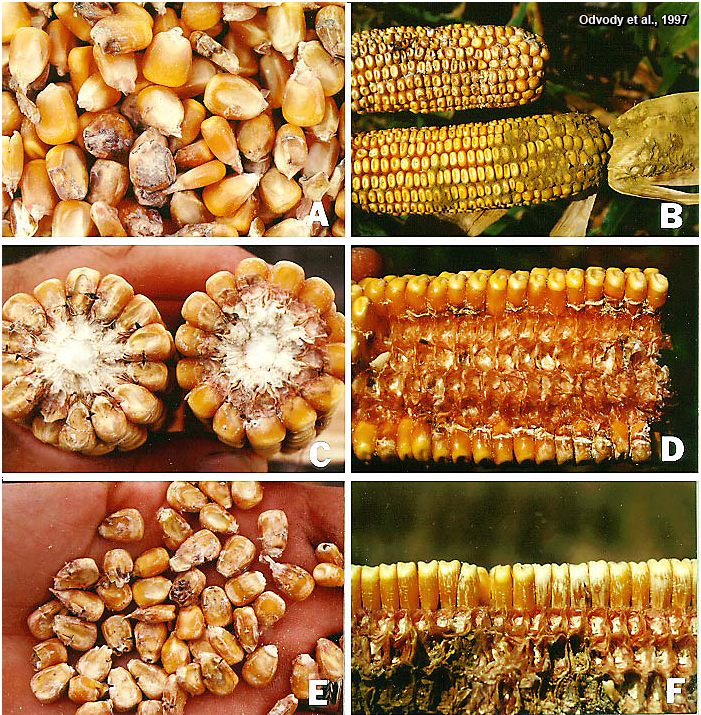
Among a number of corny oddities that appear from time to time is one that falls into the “kernel disorder” category.
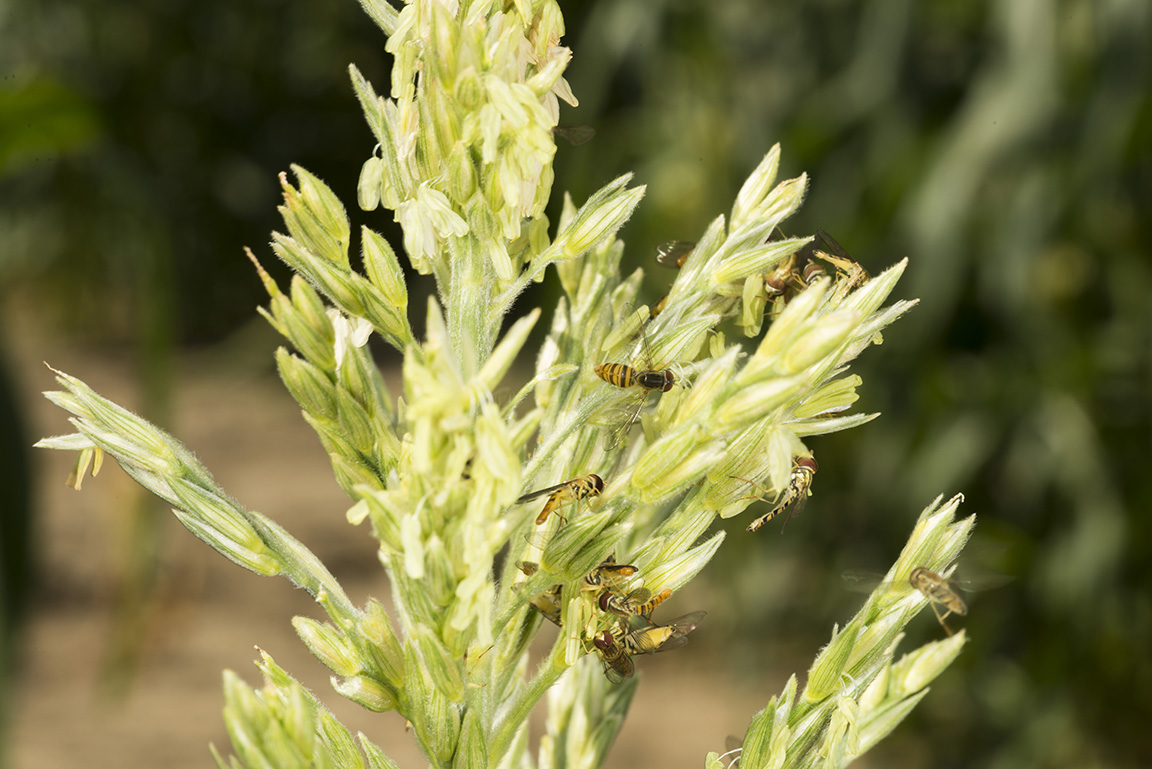
Increasingly, we are getting inquires of swarms of “bee-like” flies around Indiana fields, farmsteads, and rural environments, and wanted to take the opportunity to tell you a bit about this curiosity.
© 2025 Purdue University | An equal access/equal opportunity university | Copyright Complaints | Maintained by Pest&Crop newsletter
If you have trouble accessing this page because of a disability, please contact Pest&Crop newsletter at luck@purdue.edu.